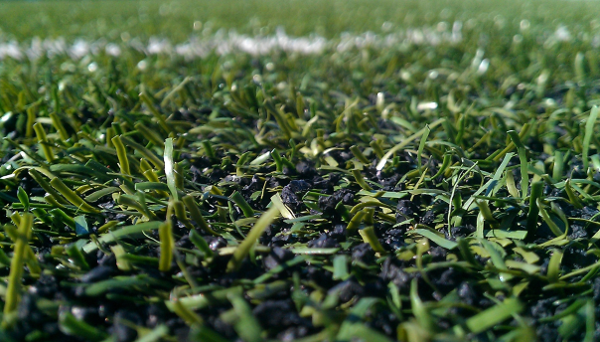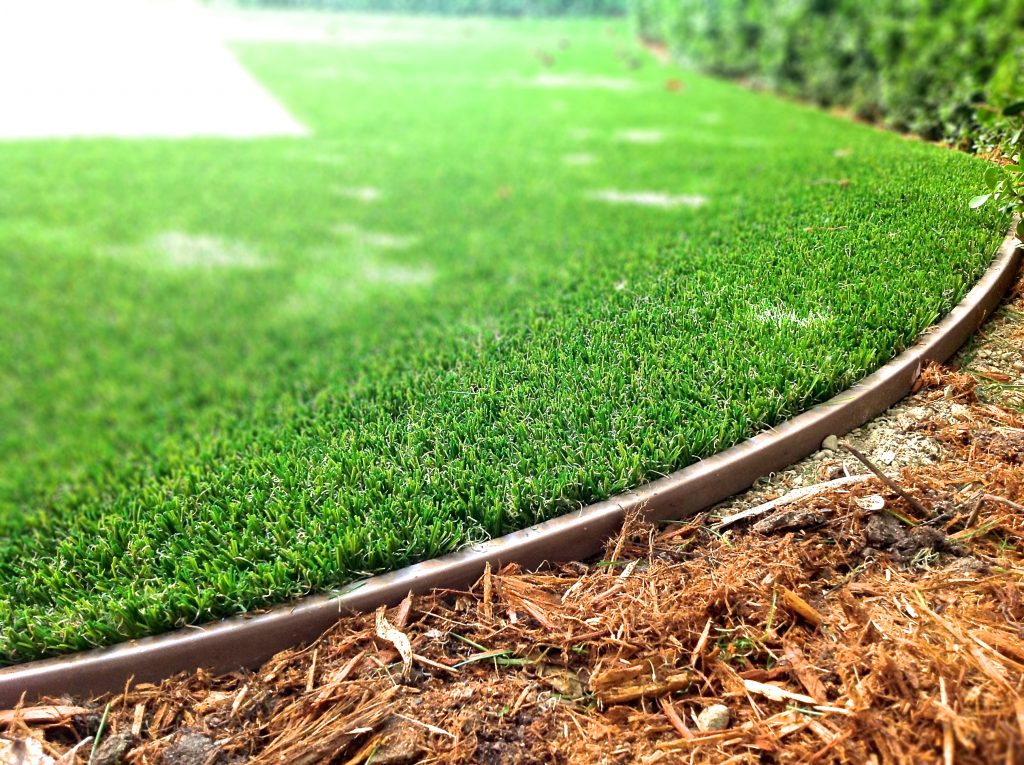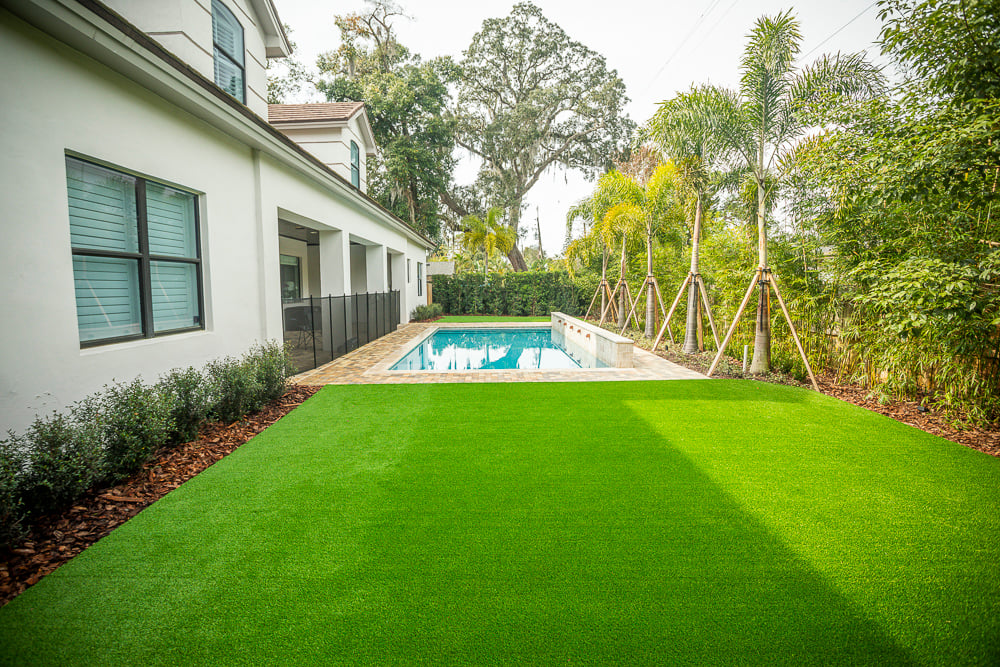Enhance Your Yard with Expert Turf Installation Phoenix AZ Solutions
Wiki Article
See Why Homeowners Prefer Synthetic Grass for Lasting Landscape Design Practices
As house owners significantly focus on sustainability in landscape design, synthetic grass has actually become a compelling alternative to conventional turf. Its ability to conserve water, reduce upkeep initiatives, and lessen ecological effect positions it as a practical choice for those looking for eco-friendly solutions. The visual charm and versatility of artificial lawn provide to diverse layout choices. However, the implications of this change prolong beyond plain ease and aesthetics, motivating a better examination of just how these options influence more comprehensive ecological results. What continues to be to be checked out is the complete range of advantages that man-made turf can supply to property owners and the atmosphere alike.Water Conservation Perks
One of the most considerable benefits of artificial grass is its function in water preservation. Traditional turf yards call for substantial amounts of water to preserve their rich look, frequently causing overuse of neighborhood water sources, especially in arid regions. In contrast, synthetic grass removes this demand entirely, as it does not need irrigation. This not only saves water however additionally lowers the strain on municipal water supply, specifically throughout dry spell problems.Additionally, the setup of synthetic grass can add to a more sustainable landscape. Homeowners can considerably lower their water costs, enabling reallocation of sources to various other environmental initiatives or household usages. In addition, man-made grass is developed to endure various weather problems without the requirement for additional watering, making it an optimal option for regions encountering water shortage.
The environmental advantages expand past immediate water savings. By lowering water usage, synthetic turf aids to reduce the impacts of climate adjustment, protecting vital ecosystems that are intimidated by extreme water extraction. As lasting landscaping practices obtain traction, artificial lawn becomes a liable option for property owners looking for to produce green outside areas.
Reduced Upkeep Efforts
Synthetic grass dramatically decreases upkeep efforts compared to traditional lawn yards. With synthetic lawn, property owners can remove the time-consuming tasks connected with natural landscaping, such as mowing, feeding, and weeding. This not only saves beneficial time but likewise lowers physical labor, making lawn care easily accessible for individuals of all ages.Among the most significant benefits is the lack of regular mowing. Conventional grass call for constant trimming to maintain a visually pleasing elevation, whereas synthetic grass stays constantly lavish without the need for cutting. Furthermore, house owners no more require to apply fertilizers or pesticides, which are commonly called for to maintain all-natural yard healthy. This shift not only lightens the workload but likewise promotes a neater, much more uniform appearance year-round.
Furthermore, synthetic grass is resistant and sturdy, needing minimal upkeep past periodic brushing and rinsing to get rid of particles. This ease of maintenance permits house owners to enjoy their outdoor rooms without the continuous worry of maintenance, supplying more time for recreation and household activities. Ultimately, the minimized maintenance initiatives associated with synthetic grass make it an appealing alternative for those seeking a low-maintenance, aesthetically appealing landscape.

Environmental Impact Reduction
There is an expanding acknowledgment of the ecological advantages connected with synthetic grass, especially in regards to water preservation and lowered chemical use. Traditional lawns require considerable amounts of water, particularly in drought-prone regions, causing raised pressure on neighborhood water sources. On the other hand, fabricated lawn eliminates the demand for watering, significantly decreasing water consumption and promoting sustainability.Additionally, conventional grass upkeep usually entails the application of chemicals, plant foods, and herbicides, which can add to soil and water pollution. Artificial lawn minimizes this ecological danger by needing minimal upkeep and basically removing the requirement for damaging chemicals. This not only enhances dirt health and wellness but also shields neighborhood environments from web hazardous drainage.
In addition, the manufacturing of natural lawn lawns typically entails making use of nonrenewable fuel sources for trimming and landscaping tools, additional adding to greenhouse gas discharges. By choosing fabricated grass, homeowners can dramatically reduce their carbon impact related to grass care tasks.
Aesthetic Allure and Flexibility
In enhancement to its ecological advantages, synthetic grass provides substantial visual appeal and flexibility for landscape design. Homeowners can accomplish a rich, environment-friendly appearance year-round, eliminating the seasonal changes generally associated with natural turf. This constant visual not just boosts the visual appeal of a residential property yet also contributes to a well-kept and refined appearance.
In addition, fabricated turf is available in a variety of styles, colors, and structures, enabling personalization to fit individual preferences and design themes - Phoenix turf companies. Whether utilized in property gardens, commercial rooms, or Learn More Here leisure locations, it can perfectly incorporate right into varied landscape design designs, from modern-day minimalist to lavish tropical setups
The convenience of synthetic grass prolongs beyond mere look; it can be set up in various areas, consisting of rooftops, patios, and also indoor spaces, developing chances for distinct landscape design options. Furthermore, it is suitable for a variety of activities, from children's backyard to pet-friendly atmospheres, giving performance without compromising design.
Eventually, the visual charm and versatility of synthetic grass make it an eye-catching choice for homeowners looking for sustainable landscape design solutions that do not compromise beauty for ecological responsibility.

Long-Term Cost Savings
One of the most compelling advantages of artificial turf is its potential for long-term cost financial savings. Unlike all-natural lawn, which needs routine maintenance-- including mowing, watering, fertilizing, and pest control-- synthetic grass significantly reduces these ongoing expenditures. Home owners can conserve a considerable amount on water bills, especially in areas where water deficiency is a pressing issue. The removal of grass care services further adds to monetary savings, as there is no need for customized devices or labor.In addition, synthetic grass has a life-span of 15 to 25 years, depending upon its quality and usage. This resilience decreases replacement prices, making it a much more affordable option in the long run. Moreover, the initial financial investment in synthetic lawn can typically be redeemed through the financial savings accrued with time.
While the upfront expense might seem higher contrasted to turf installation, the advancing financial savings from decreased upkeep and water use frequently surpass these first expenditures. Eventually, the fostering of artificial grass not just promotes a sustainable landscape design remedy but likewise supplies homeowners an economically wise option that aligns with lasting budgeting objectives.
Verdict
Synthetic turf arises as a compelling alternative for lasting landscape design, providing significant benefits in water preservation, decreased maintenance initiatives, and reduced environmental impact. As areas progressively focus on ecologically friendly techniques, the fostering of artificial lawn stands for a progressive action toward achieving resistant and sustainable landscapes.In addition, artificial turf is made to stand up to various weather conditions without the demand for additional watering, making it an ideal selection for regions encountering water shortage. (Arizona turf)

Fabricated lawn arises as a compelling option for lasting landscape design, providing significant benefits in water preservation, decreased maintenance initiatives, and lessened ecological effect.
Report this wiki page